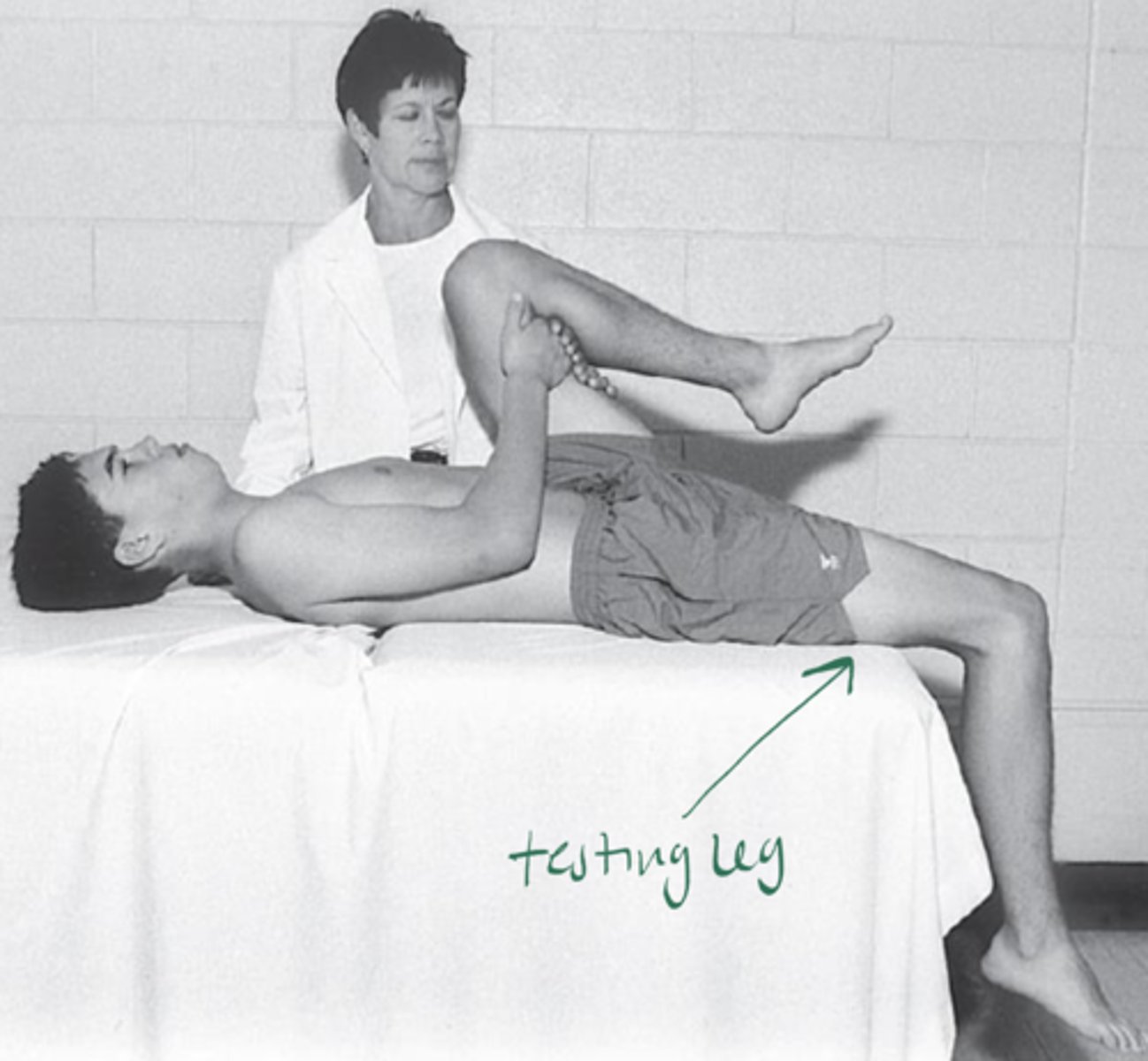Muscle Length Tests
1/12
There's no tags or description
Looks like no tags are added yet.
Name | Mastery | Learn | Test | Matching | Spaced |
|---|
No study sessions yet.
13 Terms
Pec Major
Starting position: supine, shoulder ER, and abducted
- clavicular head: 90
- sternal head: 140
Testing motion: Allow the humerus to lower toward the ground until resistance is felt
Negative: humerus falls below horizontal
Positive: elbow does not reach the table, above horizontal

Pec Minor
Starting position: supine, shoulders slightly abducted
Testing motion: Assess distance from acromion to table, apply over pressure (if tolerated by the pt) until resistance is felt
Negative: no tissue stretch with overpressure
Positive: tissue stretching with overpressure
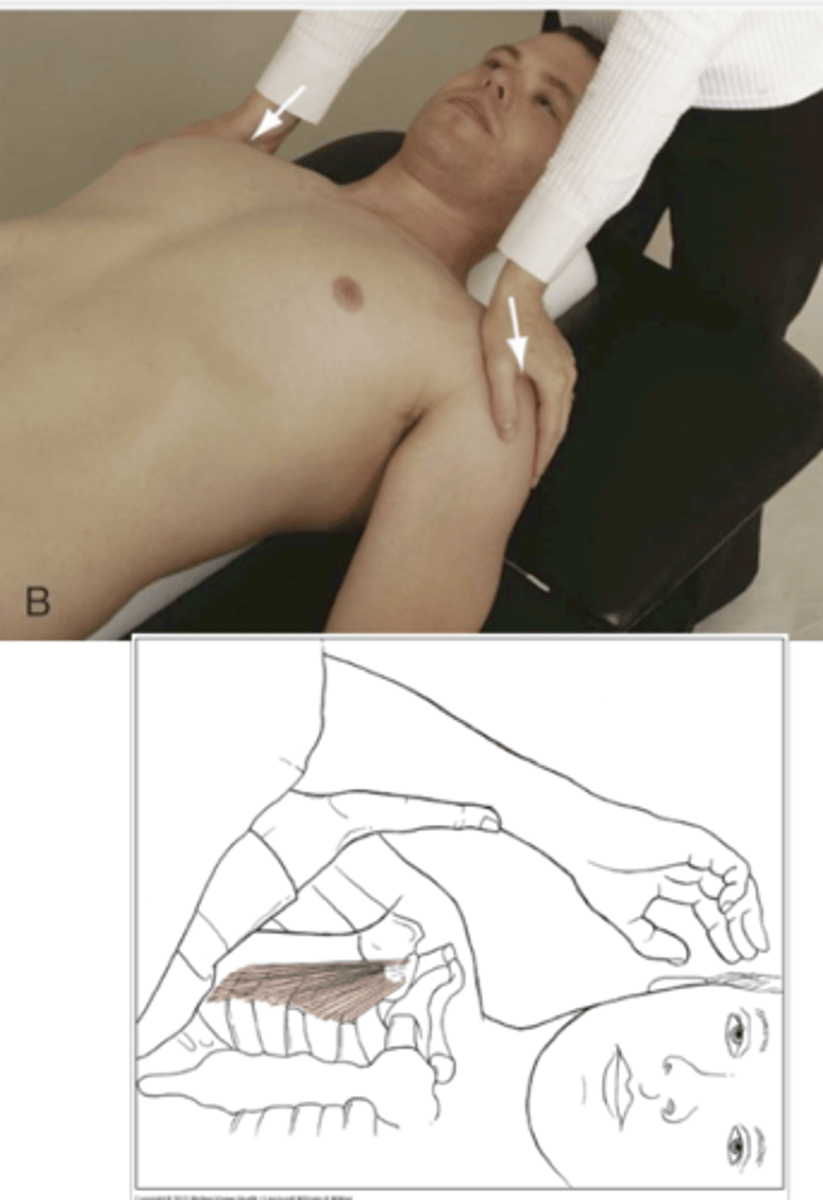
Biceps Brachii
Starting position: supine, shoulder extended, forearm pronated
Testing motion: Extend the elbow until resistance is felt, and additional elbow extension causes shoulder flexion
Pos/neg: no normative value
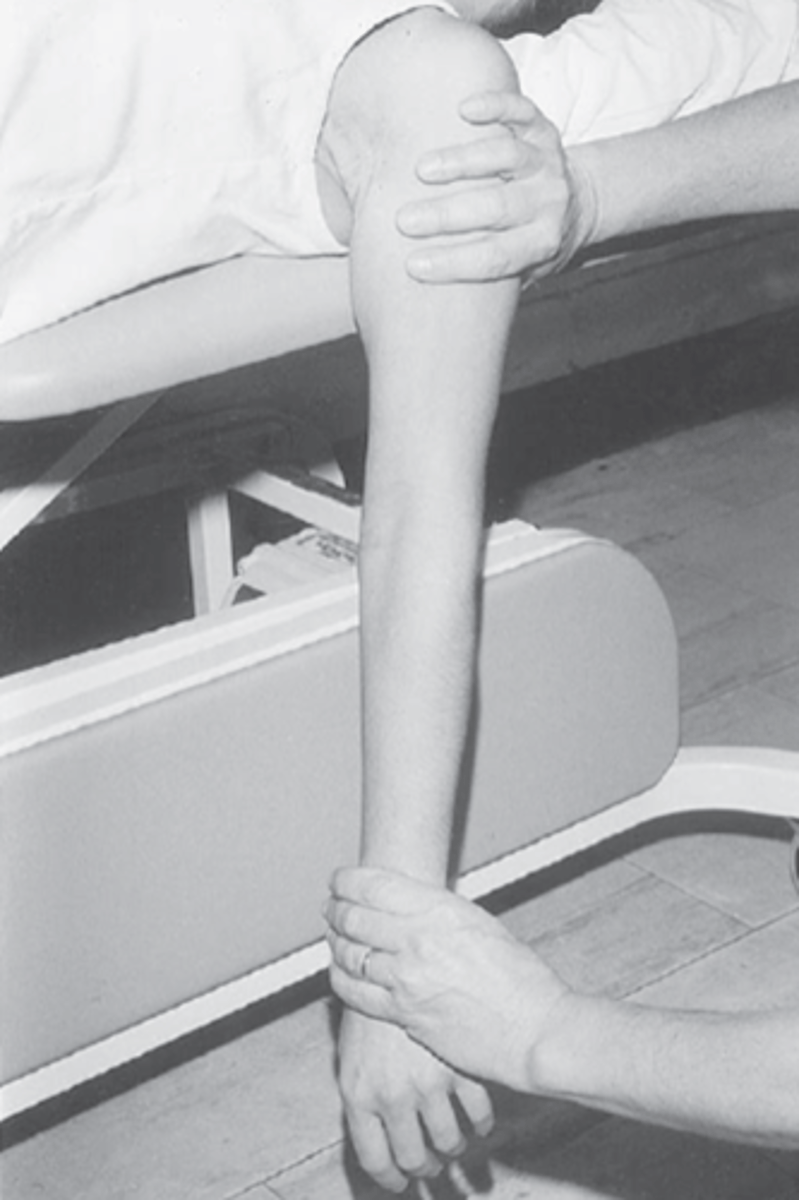
Triceps Brachii
Starting position: supine, full shoulder flexion, forearm supination
Testing motion: flex elbow until resistance is felt, and additional flexion causes shoulder extension
Pos/neg: no normative values
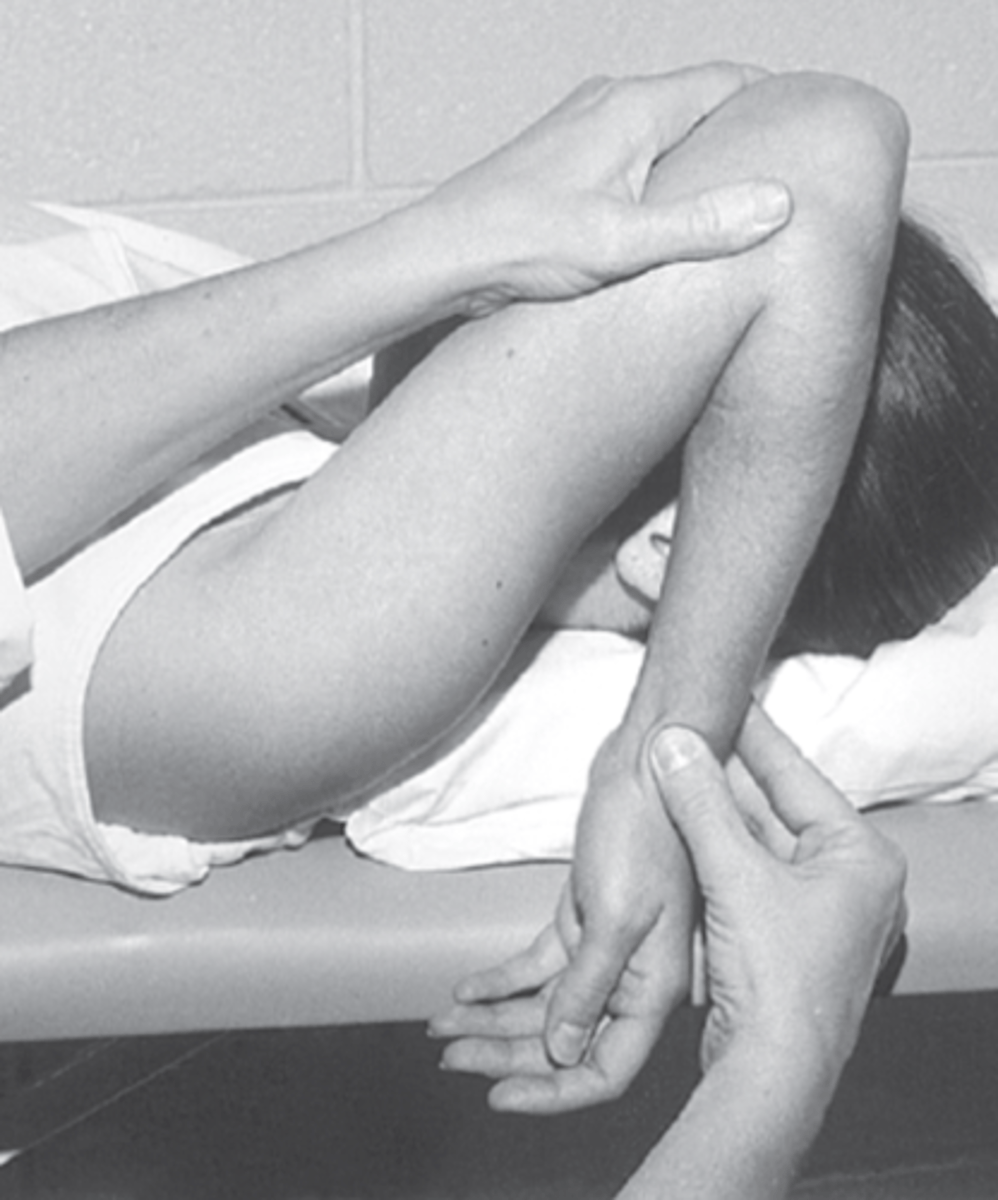
Wrist flexors
Start position: sitting next to a supporting surface, elbow in full extension, MCP, PIP, DIP jts in full extension, forearm pronation, wrist in neutral
Testing motion: Hold the MCP, PIP, DIP jts in full extension while extending the wrist until resistance occurs, and additional wrist extension causes the fingers to flex or elbow to flex
Pos/neg: No normative values (about
10-15 degrees less than
normal wrist extension ROM)
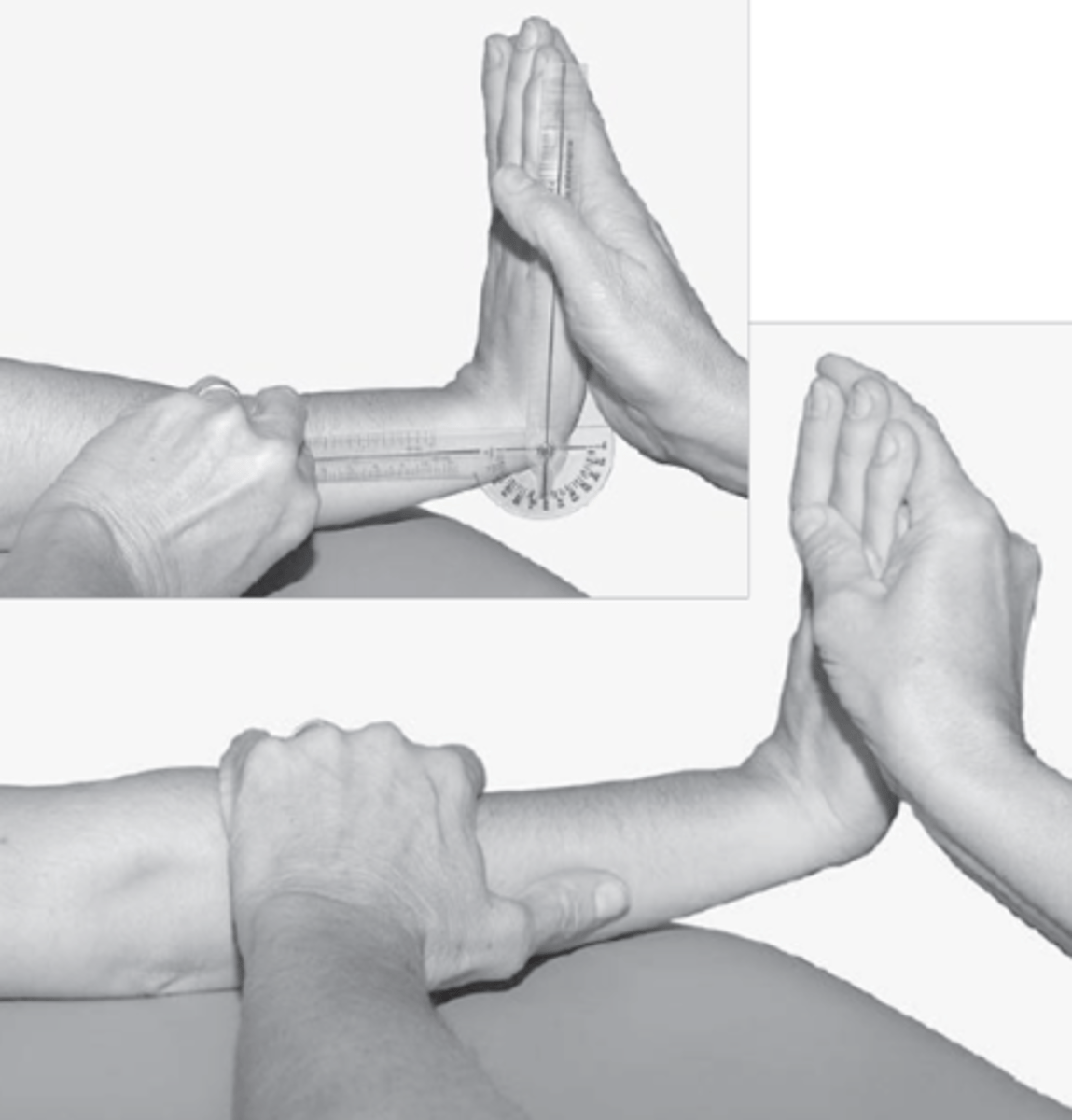
Wrist extensors
Start position: Sitting next to a supporting surface, elbow in full extension, MCP, PIP, DIP jts in full flexion, forearm pronation, wrist in neutral
Testing motion: Hold the MCP, PIP, DIP jts in full flexion while flexing the wrist until resistance occurs, and additional wrist flexion causes the fingers to extend or elbow to flex
Pos/neg: No normative values (about
10-15 degrees less than
normal wrist flexion ROM)
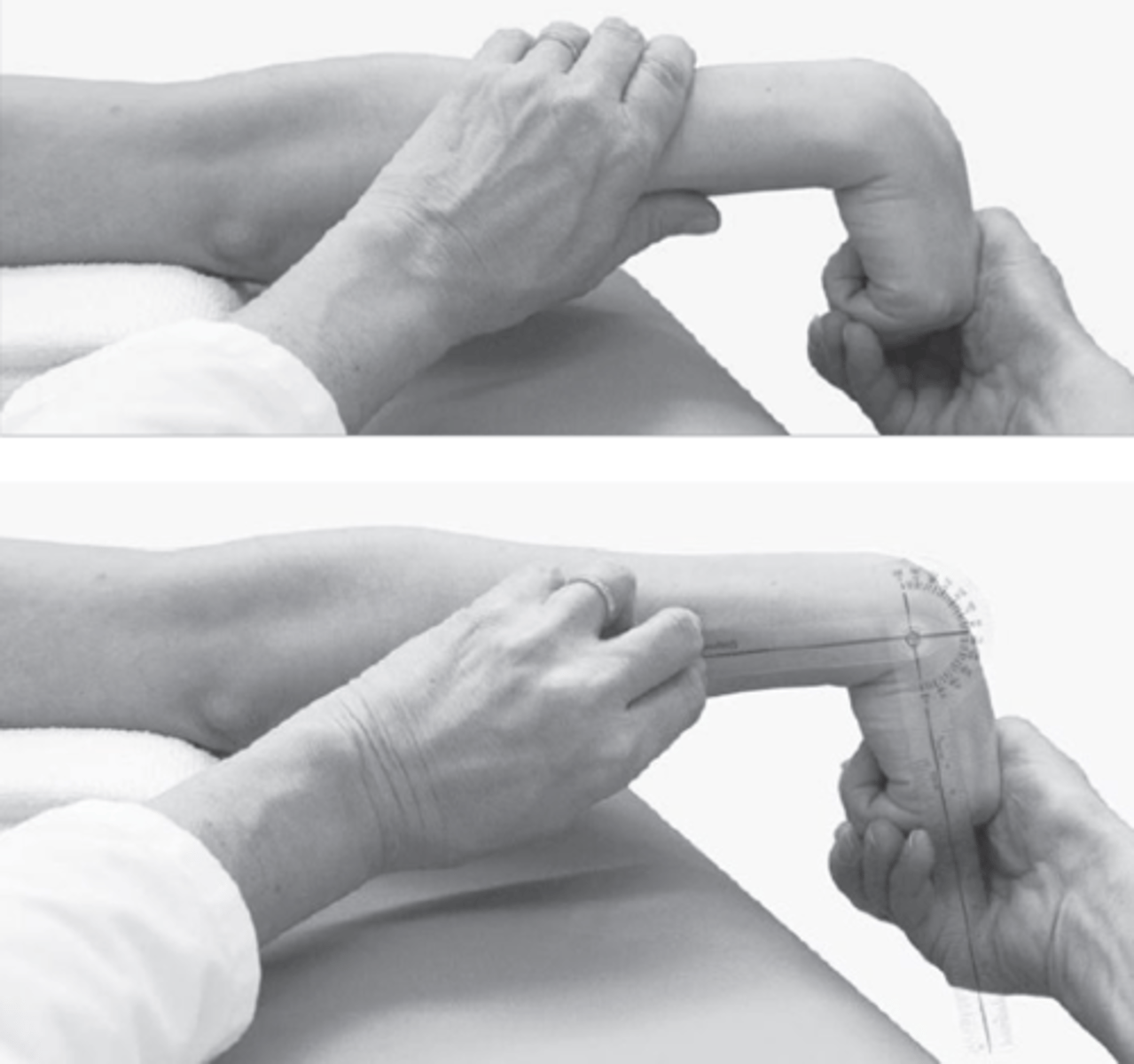
Scalenes
Position: supine
Stabilize: clavicle and first rib
Motion: slightly rotate toward and SB away from side testing
Interpretation: assessed and compared to contra side
suboccipitals
position: supine
motion: passive upper cervical flexion, occiput on c1
interpretation: these muscles are shortened in forward head posture
SCM
position: supine
stabilize: clavicle via shoulder girdle (close to sternum)
motion: SB away and rotate toward side being assessed, keep head close to table
interpretation: compare side to side
upper trap
position: supine with arms by side
stabilize: acromion, distal clavicle
motion: SB away and rotate toward side being assessed
interpretation: compare side to side
levator scapula
position: supine with arms at side
stabilize: superior angle of scapula
motion: flex, rotate, and SB in opposite direction
interpretation: compare side to side
latissimus dorsi
Start Position:
Hooklying, arms at sides
End Position:
Shoulders flexed in the sagittal plane
(monitor for compensations)
Assessment:
Amount of shoulder flexion
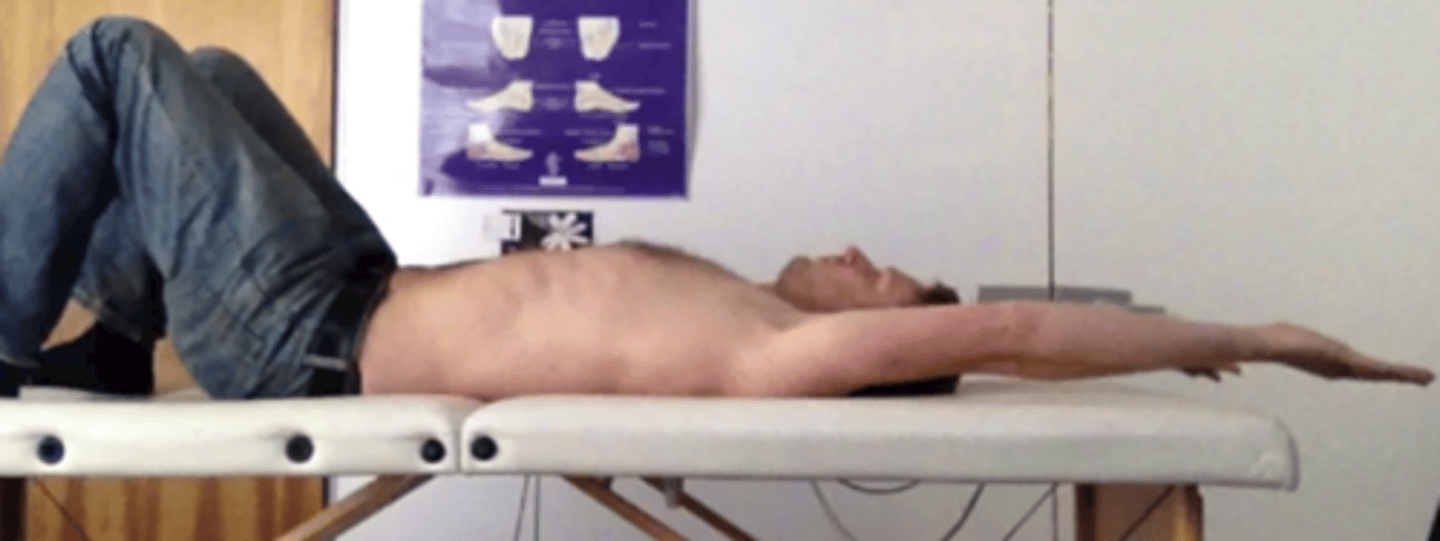
Thomas Test
Start position: sitting at the edge of the
plinth, pt moves into supine holding one knee
to chest. Maintain neutral spine and pelvis
End position: allow the free leg to lower
toward the table, maintain neutral rotation
Measurement: observe the movement and
position of the thigh as it moves toward the
plinth
Assessment:
(+) test if the thigh is not parallel to the table
(+) test if the knee is flexed less than 80-90˚
(+) test if the thigh abd/adducts or IR/ER
